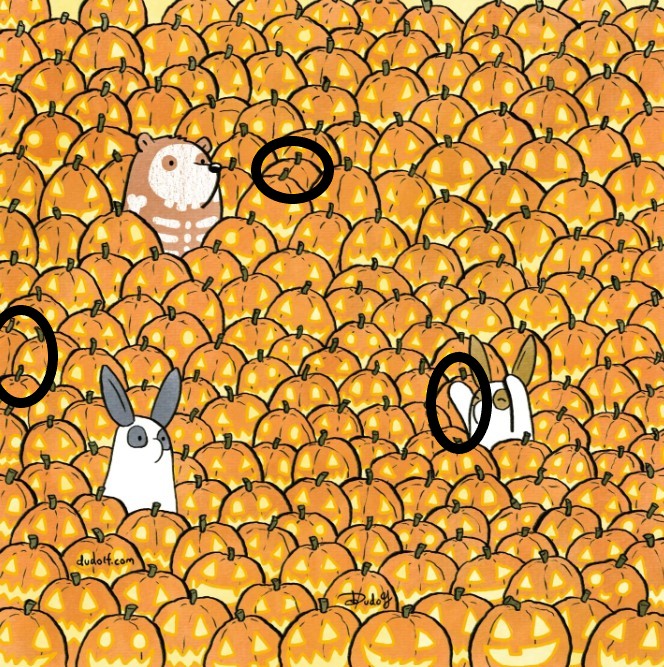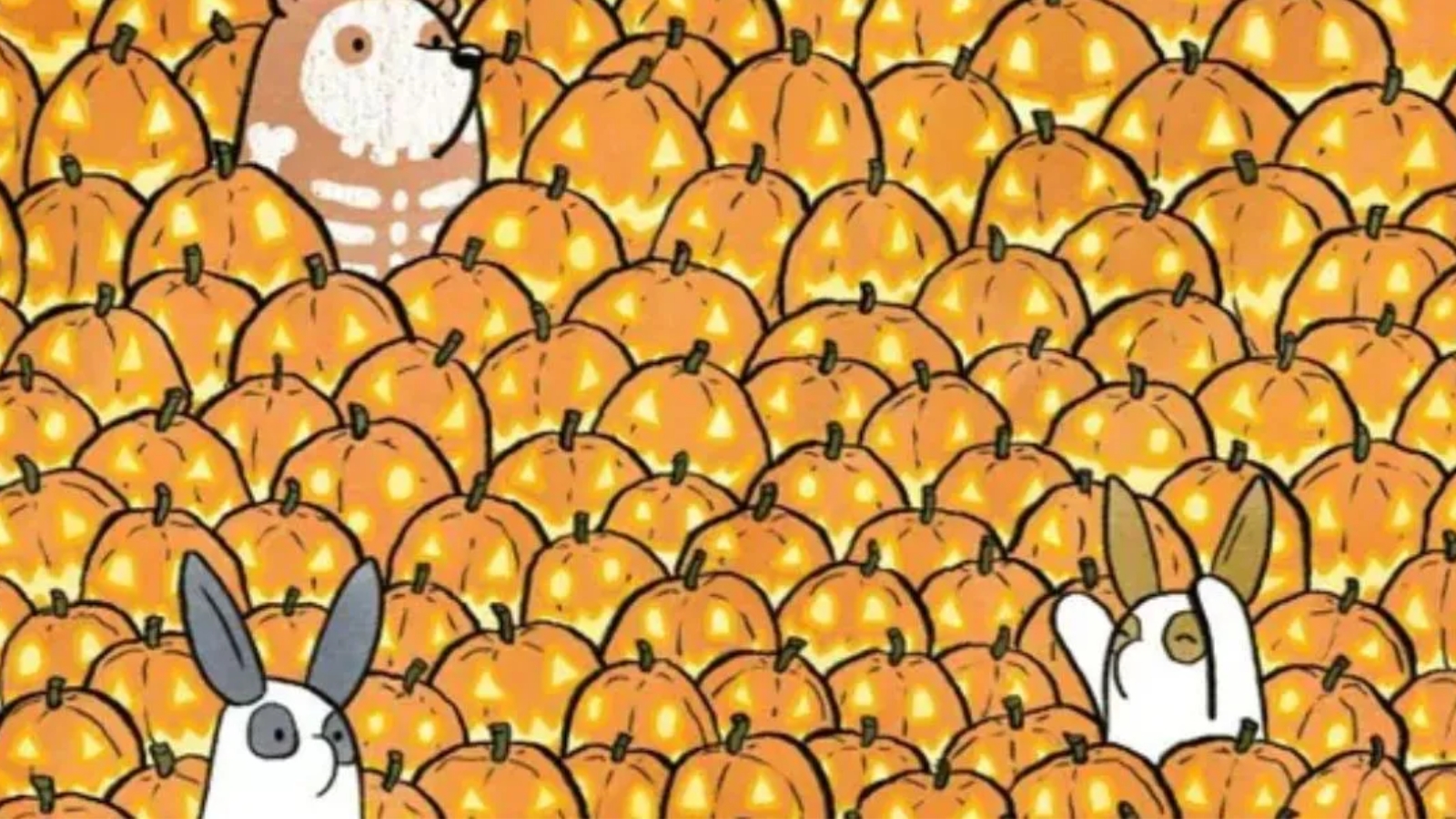Visual puzzles have captivated minds for generations, and seasonal challenges featuring hidden pumpkins bring extra excitement to brain training. These clever optical illusions test your observation skills while providing entertainment that sharpens your mental acuity.
What Makes Pumpkin Optical Illusions So Engaging?
Hidden object puzzles featuring pumpkins combine seasonal charm with cognitive challenge. Your brain must filter through visual noise, distinguish shapes, and identify subtle differences between carved jack-o’-lanterns and plain pumpkins. This process engages multiple areas of your visual cortex simultaneously.
The appeal lies in the satisfaction of discovery. When you finally spot that cleverly concealed uncarved pumpkin among dozens of decorated ones, your brain releases a small burst of dopamine – the same chemical associated with achievement and reward.
Optical Illusion Hidden Pumpkins Visual Puzzle: Can You Pass This Clever IQ Test?

How Your Brain Processes These Visual Challenges
Your visual system works like a sophisticated scanner, constantly analyzing shapes, colors, and patterns. When faced with a pumpkin optical illusion, several mental processes activate:
Pattern Recognition: Your brain searches for familiar pumpkin shapes while filtering out distracting elements.
Detail Analysis: You examine each object for specific features like stems, faces, or smooth surfaces.
Spatial Awareness: Your mind maps the location of objects to avoid repeatedly checking the same areas.
Memory Integration: Previous experience with similar puzzles helps you develop more efficient search strategies.
Proven Strategies for Spotting Hidden Pumpkins
The Systematic Scan Method
Rather than randomly searching, develop a methodical approach. Start from one corner and work systematically across the image. This prevents you from missing sections or repeatedly checking the same areas.
Many successful puzzle solvers use the “grid method” – mentally dividing the image into smaller sections and thoroughly examining each square before moving to the next.
Focus on Key Distinguishing Features
Surface Texture: Uncarved pumpkins typically have smooth, uninterrupted surfaces compared to carved jack-o’-lanterns with holes and indentations.
Color Variations: Look for subtle differences in orange shading or areas where lighting affects the surface differently.
Shape Consistency: Hidden pumpkins often maintain perfect roundness while carved versions may appear slightly distorted due to their facial features.
Size Relationships: Sometimes hidden objects appear slightly larger or smaller than the obvious ones.
Benefits Beyond Entertainment
Cognitive Enhancement
Regular practice with optical illusions strengthens several mental abilities:
Attention to Detail: These puzzles train your brain to notice subtle differences that might otherwise go unnoticed.
Visual Processing Speed: With practice, you’ll identify patterns and anomalies more quickly.
Problem-Solving Skills: Each puzzle requires strategic thinking about where to look and how to organize your search.
Patience and Persistence: Learning to methodically work through challenging visuals builds mental resilience.
Practical Applications
The skills developed through pumpkin optical illusions transfer to real-world situations:
- Enhanced ability to spot important details in work documents
- Improved observation skills for safety awareness
- Better visual memory for remembering faces and locations
- Increased focus and concentration in daily tasks
Creating Your Own Pumpkin Puzzle Experience
| Difficulty Level | Recommended Features |
|---|---|
| Beginner | 3-5 hidden pumpkins, high contrast, minimal distractors |
| Intermediate | 6-10 hidden objects, moderate visual complexity, varied sizes |
| Advanced | 10+ hidden pumpkins, complex backgrounds, similar color schemes |
| Expert | 15+ objects, intricate patterns, multiple layers of illusion |
Tips for Puzzle Creators and Enthusiasts
Making Effective Hidden Object Puzzles
Balance Challenge and Fairness: Hidden objects should be difficult to spot but not impossible. Avoid making pumpkins so obscure that finding them relies purely on luck.
Use Natural Camouflage: The best hiding spots use color, texture, and shape similarities to naturally conceal objects rather than artificial tricks.
Provide Visual Variety: Mix different hiding techniques – some pumpkins might blend with backgrounds while others hide in plain sight among similar objects.
Improving Your Puzzle-Solving Skills
Practice Regularly: Like any skill, visual perception improves with consistent practice. Spend a few minutes daily on different types of optical illusions.
Adjust Your Environment: Ensure proper lighting and take breaks to prevent eye strain. Fresh eyes often spot things tired ones miss.
Learn from Mistakes: When you finally find a hidden pumpkin, analyze why it was difficult to spot initially. This builds pattern recognition for future puzzles.
The Psychology Behind Visual Challenges
Our fascination with hidden object puzzles stems from evolutionary advantages. Humans developed keen observation skills for survival – spotting predators, finding food, and navigating environments. Modern optical illusions tap into these same neural pathways, providing mental exercise that feels naturally engaging.
The seasonal aspect of pumpkin puzzles adds emotional connection. Halloween imagery evokes memories and creates positive associations that enhance the puzzle-solving experience.
Optical Illusion Answer
Frequently Asked Questions
Q: How long should I spend looking for hidden pumpkins before giving up?
A: Set a reasonable time limit like 5-10 minutes. If you’re stuck, take a break and return with fresh eyes.
Q: Are there tricks to make finding hidden objects easier?
A: Try slightly unfocusing your eyes or viewing the image from different angles. Sometimes peripheral vision catches what direct focus misses.
Q: Can these puzzles actually improve my IQ?
A: While they enhance specific visual skills, IQ improvement requires varied cognitive challenges beyond just optical illusions.
Puzzle Optical Illusion Challenge Spot 3 Hidden Changes in 19 Seconds Flat
